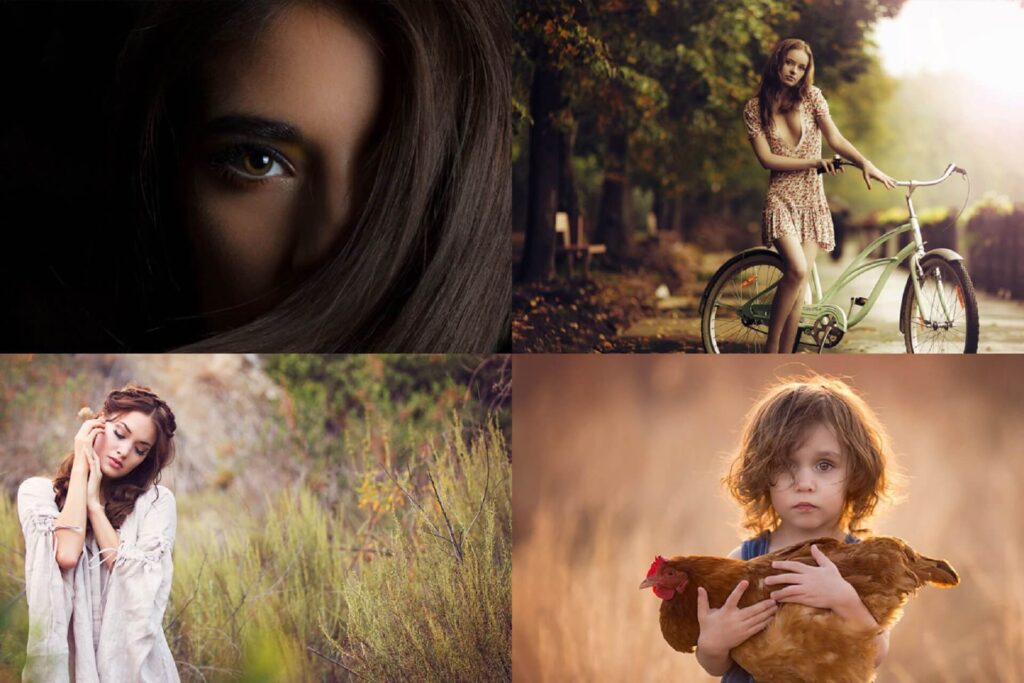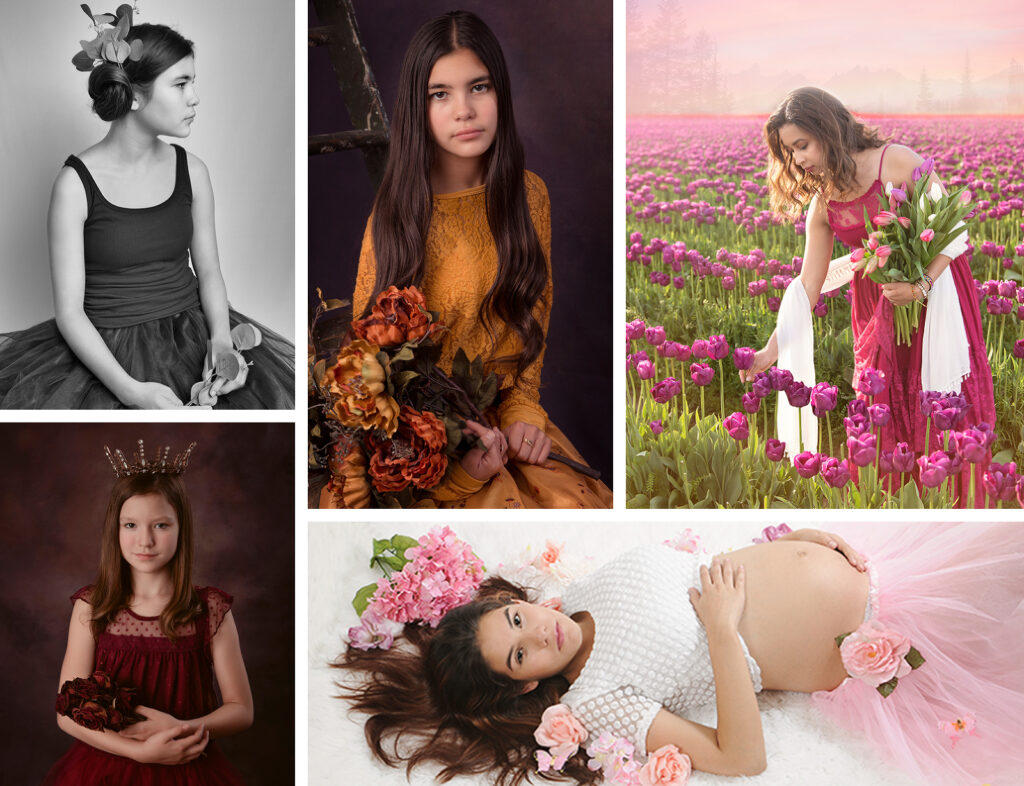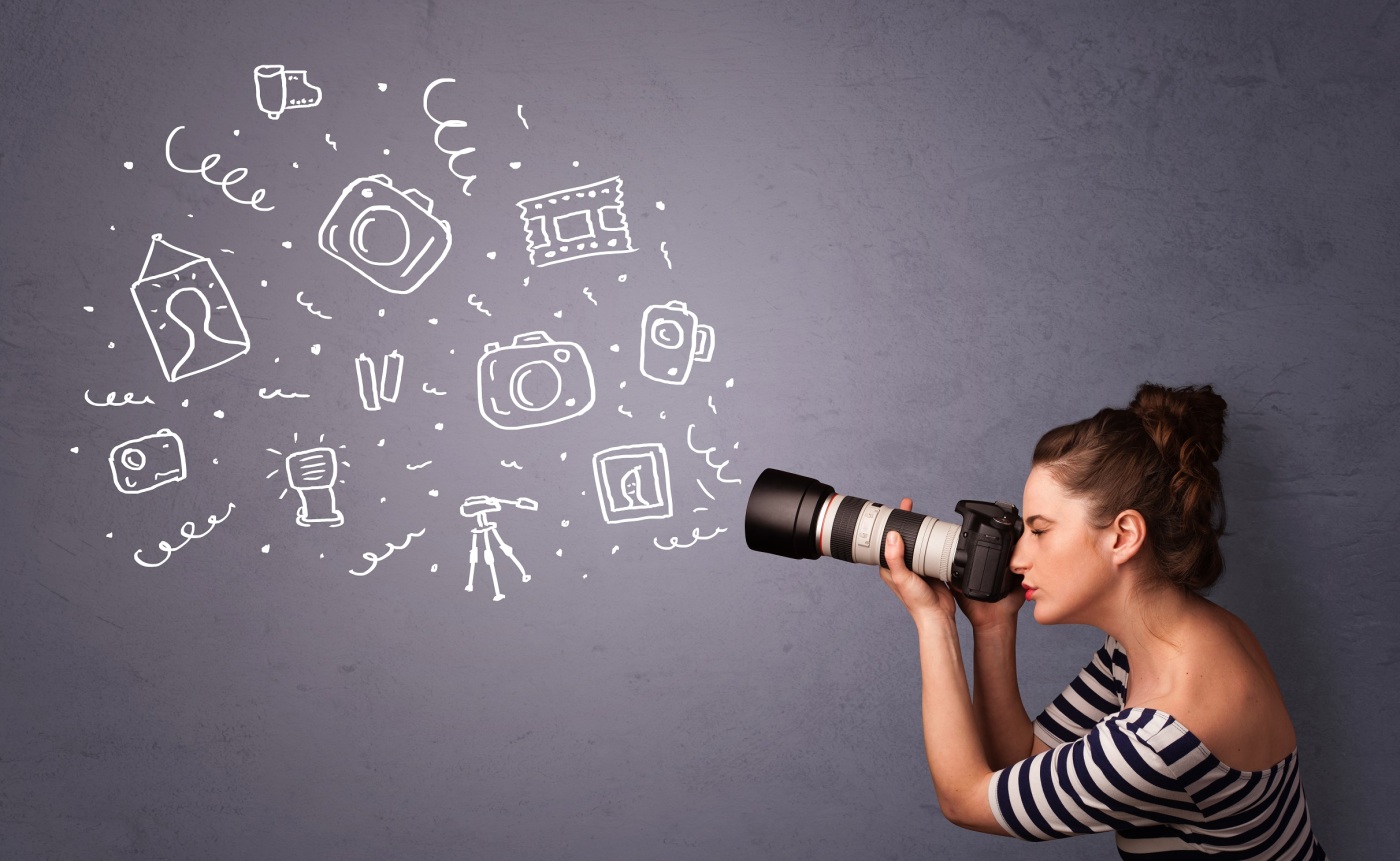Tips from Professionals
Photographing someone’s face alone is not the only artistic endeavor in portraiture. A skillfully taken portrait establishes a bond between the observer and the person in the picture by capturing the essence, feelings, and personality of the subject. The strategies and insights employed by experts can help you take your portrait photography to the next level, regardless of your level of experience or desire to develop. This post will go over some of the best advice and techniques from pros in the field for taking gorgeous photographs.

1. Understanding the Subject
It’s important to know your subject matter well before you take out your camera. This comprehension entails learning about their personality, feelings, and background in addition to their appearance. The most effective portraits frequently capture the spirit of the subject rather than merely a likeness.
Take some time to discuss your topic with them before to the shoot. Inquire about their hobbies, the message they want to portray with the painting, and any preferences or fears they may have. The subject feels more at ease and develops a rapport during this talk, which encourages more spontaneous expressions throughout the photo session.

2. Choosing the Right Lighting
One of the most important aspects of portrait photography is lighting. It can add depth, emphasize certain aspects, and set the tone for your pictures. Expert photographers frequently assert that the ability to comprehend and manipulate light is what distinguishes a novice from an expert.
Natural Light: When shooting, natural light is frequently the best choice for both novice and seasoned photographers. The golden hours, which occur just after sunrise and before sunset, offer a mellow, diffused light that enhances skin tones and creates a lovely mood.
Studio Lighting: Studio lighting allows you complete control over the color, intensity, and direction of the light in a regulated setting. Reflectors, beauty dishes, and softboxes are frequently used accessories to produce even, soft lighting that reduces harsh shadows. To add drama and dimension to your photographs, try experimenting with different lighting arrangements, such as split lighting (where one side of the face is illuminated while the other is in shadow) or Rembrandt lighting (which is defined by a triangle of light on the cheek).
Advice: Don’t be scared to play around with highlights and shadows. Less light or stark contrasts can occasionally produce a stronger image that highlights particular traits or feelings.
3. Composition and Framing
The efficacy of your portrait can be greatly influenced by the way you arrange and compose it. Arranging components within the frame to direct the viewer’s attention and produce a balanced image is known as composition.
Rule of Thirds: This age-old composition method has the subject placed along or at the intersections of a 3×3 grid that is divided into portions of the frame. As a result, the portrait has a more visually appealing composition that is both balanced and energetic.
Centering the Subject: Although the rule of thirds works well, there are instances when defying the norm can provide visually striking effects. When your subject is centered in the frame and looks directly into the camera, it can establish a strong and personal connection between them and the spectator.
Negative Space: The vacant or uninhabited spaces surrounding the topic are referred to as negative space. Effective use of negative space can highlight the topic and evoke feelings of focus, solitude, or tranquility.
Advice: Be mindful of the surroundings. A background that is busy or distracting might detract from the topic. A low f-stop can help you achieve a shallow depth of focus, which can help you blur the backdrop and highlight the subject.
4. Engaging with the Subject
A big element of taking beautiful pictures is getting your subject relaxed and interested. The pictures will show if the subject is stiff or frightened, so it’s critical to establish a fun and laid-back atmosphere.
Maintain a conversation while the shot is underway. Play some of their favorite music, tell jokes, or discuss topics that pique their interest. The idea is to persuade them to stop worrying about the camera and concentrate on savoring the experience.
Direction: It’s important to give moderate, unambiguous instructions. Help your subject find their natural balance when posing, placing their hands, and directing their gaze. Strike a balance because over-directing can make the subject feel uncomfortable.
Catching Unscripted Moments: Some of the most beautiful photos are captured of subjects who are just being themselves, without any effort at posing. Always have your camera ready to record those unscripted, in-between moments that showcase real emotion and personality.
A piece of advice: Make the process cooperative. To get their input, show the subject a few of the pictures taken throughout the session. They may feel more self-assured and engaged in the creative process as a result.
5. Mastering Posing Techniques
Posing itself is a form of art. The way your subject sits, stands, or tilts their head can have a big impact on how the portrait turns out. Expert photographers know how to position their subjects to highlight their best characteristics and create the right atmosphere.
Comfortable positions: Begin with easy-to-adjust, basic positions that the subject can readily modify. Natural poses tend to look more authentic and carefree than overly stiff or staged ones.
Angles: Angles are quite important for making the subject look good. It is possible to achieve a more thin face and larger eyes by taking shots from a modest elevation above the subject’s eye level. On the other hand, firing from below can provide the impression of authority and strength.
Body Language: Observe the body language of the person in question. Small changes like loosening up the shoulders, lengthening the neck, or putting more weight on one leg can have a significant impact on the portrait’s overall appearance and mood.
Hands and Arms: It can be difficult for subjects to know what to do with their hands. Give them a hand to hold, or instruct them to put their hands in their pockets, on their hips, or on their face or hair only lightly. The secret is to avoid making uncomfortable or stiff hand gestures.
Advice: Choose a stance for the subject that complements both their character and the narrative you wish to convey. A more reticent person might appear better in a soft, contemplative position, whereas a bold and self-assured person might look fantastic in a forceful, direct pose.
6. Using the Right Equipment
Stunning portraits can be achieved with a variety of tools, however creativity and technique are still crucial. Gaining the most out of your equipment requires that you know how to utilize it properly.
Camera and Lenses: Selecting the right lens is more crucial than having a good camera with manual controls. Prime lenses are popular for portraiture because they provide a lovely bokeh (blurred backdrop) and enable sharp focus on the subject. Examples of prime lenses with wide apertures (f/1.4 to f/2.8) are 50mm and 85mm.
Reflectors: To soften shadows and provide a natural glow, reflectors are a straightforward but effective tool for bouncing light back onto the subject. When natural light is the main source or in outdoor settings, they are extremely helpful.
Tripod: Although it’s not always required, a tripod can help to guarantee stability and consistency, particularly in dimly lit areas or when you need to get closer to the subject.
Advice: Try not to obsess with owning the priciest equipment. The best camera is the one you carry with you, and if you have the correct techniques and eye, even little equipment may produce beautiful photographs.
7. Post-Processing with Care
The last stage in producing an amazing portrait is post-processing. This is the stage where you can adjust the image to make it more impactful, but you should proceed cautiously.
Subtle Enhancements: To make subtle changes to exposure, contrast, and color balance, use editing tools such as Adobe Lightroom or Photoshop. Without overediting, try to bring out the subject’s inherent beauty.
Skin retouching: Take care not to overdo it while retouching to eliminate flaws or blemishes. The idea is not to create an unnaturally flawless or smooth appearance, but rather to preserve the subject’s inherent texture and character.
Black and White Conversion: A portrait’s expression and form can be emphasized and given a timeless, classic sense by turning it black and white. Try several combinations of color and monochrome to see which works best for the portrait’s tone.
Tip: When modifying, never forget about the original image. The most effective edits are frequently the subtle ones that improve the photograph without detracting from the subject.The last stage in producing an amazing portrait is post-processing. This is the stage where you can adjust the image to make it more impactful, but you should proceed cautiously.
Subtle Enhancements: To make subtle changes to exposure, contrast, and color balance, use editing tools such as Adobe Lightroom or Photoshop. Without overediting, try to bring out the subject’s inherent beauty.
Skin retouching: Take care not to overdo it while retouching to eliminate flaws or blemishes. The idea is not to create an unnaturally flawless or smooth appearance, but rather to preserve the subject’s inherent texture and character.
Black and White Conversion: A portrait’s expression and form can be emphasized and given a timeless, classic sense by turning it black and white. Try several combinations of color and monochrome to see which works best for the portrait’s tone.
Tip: When modifying, never forget about the original image. The most effective edits are frequently the subtle ones that improve the photograph without detracting from the subject.
Conclusion
It takes a combination of technical prowess, artistic vision, and interpersonal chemistry to capture beautiful portraits. You may produce portraits that are not only visually arresting but also profoundly significant by getting to know your subject, perfecting lighting and composition, interacting with the subject, and making efficient use of your equipment. Keep in mind that every outstanding portrait conveys a tale that is specific to the subject and the moment you have captured. It is possible to create a unique style and set of approaches for your photographs with a little effort, perseverance, and desire to try new things.










Leave a Reply